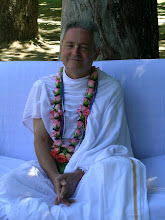
20th December 2008,
Naples, Castello Angioino
First of all, I’d like to draw the attention on some cosmogonical aspects, in order to facilitate the comprehension of Men context. The Modern Man does not know anymore where he comes from, where he is going, above all he does not know who he is, being fully identified with an external and transitory identity. His decontextualization is one of the most serious problems afflicting today’s society and cannot be simply solved through erudition. The search of oneself is the substrate of meditation and it is confirmed by the great Indovedic tradition works as Samhita, Upanishad, Itihasa and Purana, that can lead a very interesting dialogue with modern Western Tradition. Among numerous authors and Thought Masters which have drawn resources, cues and concepts from the very extensive Vedic culture for their doctrines and theories, we should mention Carl Gustav Jung and his “individuation process”. To individuate oneself means to get acquainted with one’s deepest nature, instead of restricting oneself just on the superficial and fallacious level of sensory perception. The signs and information reaching our consciousness from the external environment, through our sense organs and next elaboration at cortical level, are just a fraction of reality, even less than 10% as indicated by Prof. Genovesi during his speech. Knowledge of reality through the senses is a null result, as well as our capability to understand, since it is conditioned and subject to sensory perception. Hence, not only senses (indriya) are misleading, but also the perceptive information fields related to the mind (manas), being based on sensory perception.
The tendency (vasana) of the mind to depend on sensory information brings to a preconceived, rigid and generally structure perception of the world, that when not integrated and enriched is useless to define the individual identity.
The issue about the nature of personal identity is crucial for meditation. Indovedic psychology identifies human being in its entirety: as well as the universe involves three interacting worlds, being constituted from earth, in-between dimensions and heaven, the incarnated human being has a triple nature: physical, psychic and spiritual. The solid, earthy and physical constitution is the material body that includes a complex structure – the most complex structure known today – called nervous system, but also an apparatus that is more subtle, although of material nature, not definable neither graphically nor spatially, not even temporally: the psychic structure. In the end, there is the inmost nature of man, the first cause of life, his essence and real identity: the spiritual one. According to Vedic wisdom every human being is ontologically “atman”, a spiritual and eternal sparkle. To simplify even further, we can say that man’s identity is split into two different aspects: one is related to the psycho-physical conditions that the individual historically experienced during his different life’s cycles, that is called historical self or false ego, the sum of the psychic contents, defined in sanskrit as “ahamkara”. The other one is real, eternal and immutable, beyond time and space and is the spiritual nature. The basic faculty to reach the meditative dimension is attentiveness, that is not controlled by the nervous system, contrary to what is stated by the extreme positivism embraced by the modern western psychology, but in the first instance is promoted by “atman”, the unifying center that holds and gives an unique and unrepeatable characterization to the personality. The spiritual self makes use just of the physiological and biological part of the so called “human being” and feeds and moves his energies. All the Indian classic tradition schools (sampradaya), all the great Masters lines of disciplic succession, who practiced the Vedic teachings in their daily life, recognize that atman is the fundamental principle.





No comments:
Post a Comment